Basketball wasn’t always the cross-cultural force it is today. Once, it was just about the game — jaw-dropping skills, gravity-defying dunks and kids everywhere dreaming of being like Mike (Michael Jordan, that is). Now? They don’t just want to play like the stars, they want to look like them. The pre-game tunnel walk, once a casual stroll into the arena, has become a global fashion spectacle, a runway where athletes showcase their style as much as their game-day mindset.
In the current era, the NBA is watched by millions worldwide. It’s headlined by superstars like LeBron James, Kevin Durant, and Stephen Curry. Every player is a walking brand, every fit analyzed, and every moment instantly shared across social media. Not too long ago, though, the NBA Finals weren’t even aired live. As recently as 1975, basketball players were radio stars. The WNBA didn’t exist until the late ’90s. And while the game always had swagger, it wasn’t fashion.
Things began to change when new tech arrived to give greater visibility to players on and off the court, creating a natural relationship between sport and fashion. The evolution was measured, but it wasn’t slow: Suddenly, it mattered what players were wearing.
“We didn’t know anything about stylists. First of all, that wasn’t a thing in the NBA when we first got in,” said Dwyane Wade, reflecting on his arrival in the league as part of the historic 2003 draft class. “I used to shop at Burlington Coat Factory before games, trying to put something together. I came from nothing, so spending a lot of money on clothes was not something that I wanted to do.”
Today, it’s assumed that an athlete’s style is as intentional as how they play. “We didn’t start fashion in the NBA. Guys dressed very well way before us,” said Wade. “But we started to present ourselves in a different way than the generation before. And so today’s generation is now winning off the back of some of the things done by people like myself, LeBron, Carmelo [Anthony], Chris Paul, Russell Westbrook and so many others.” Among this new cohort are Shai Gilgeous-Alexander and Angel Reese, who are signing deals with major brands and building relationships with stylists and luxury houses to secure eye-catching fits for tunnel walks and Met Gala appearances.
Let’s take a look at just how the game went from baggy jerseys and oversized suits to luxury fashion and elite tailoring.
The Sartorial Age: When NBA Style Found Its Swagger (1967 – ’78)
It’s not usually the first era mentioned in NBA fashion history, but it can’t be overlooked. While the 7-foot “big men” of the day were defining the game –– such as Wilt Chamberlain, Bill Russell and Kareem Abdul-Jabbar –– there were others, under 7 feet, whose stature was amplified by style. Julius “Dr. J” Erving and Walt “Clyde” Frazier broke from the league’s predictable game-day three-piece formalwear, exemplified by Russell, opting instead for floral shirts, leather suits in bright colors and plenty of personal flair.
No one did it better than Frazier, with fur coats, bell-bottoms and top hats. On the court, Dr. J made jewelry part of the uniform, adding a little extra shine to his high-flying game. These players helped prove that skill and style could go hand in hand.
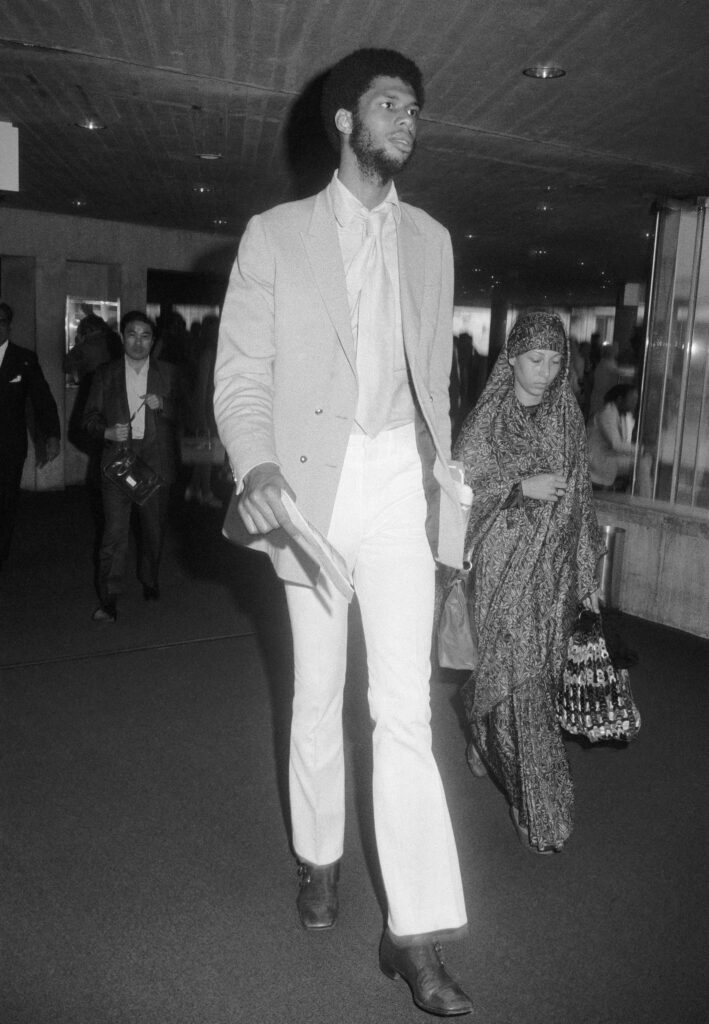
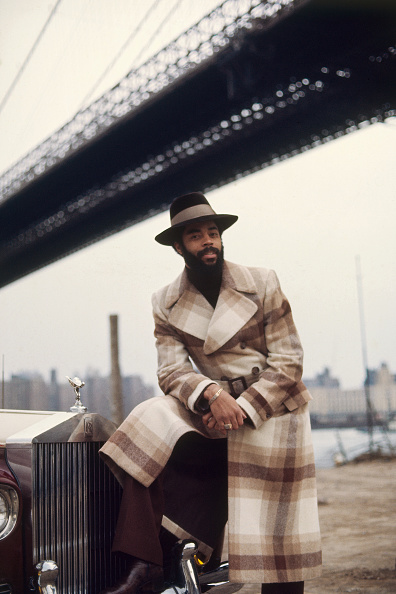
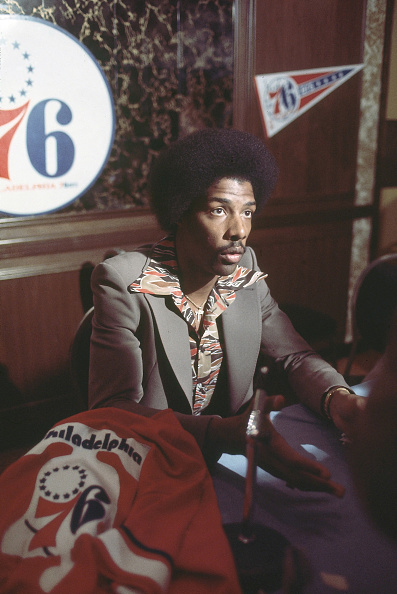
Coach Style: From Sideline Suits to Statement Fits (1972 – Present)
Back in the day, coaches dressed like they were stepping onto the trading floor rather than the hardwood. And they owned it.
Nobody did pinstripes like “Dr. Jack” Ramsay, who led the Portland Trail Blazers to a championship in style. Then there was Pat Riley — his Lakers didn’t just dominate on the court, they looked the part, too. It all started with Riley: The slicked-back hair, the rolled-up sleeves. When you saw that fit, you knew he meant business –– and he took that signature look to nine NBA championships.
Pat Summitt set the standard in women’s college basketball, leading Tennessee to eight national titles while keeping her sideline style unpredictable. One night, she’d be in a bold orange suit with a crisp white button-up. The next, a blazer and skirt paired with an understated sweater. She never missed.
These days, NBA and college coaches are more likely to rock a quarter-zip and sneakers than a tailored suit. But they still bring the heat. South Carolina’s Dawn Staley blends luxury with sport, mixing Gucci and Louis Vuitton with fresh Nike kicks. And if anyone defines sideline camp (intentional or not), it’s LSU’s Kim Mulkey, who’s never afraid to go all in on a look.
The fits may have changed, but one thing hasn’t: The best coaches always look like they belong on top.
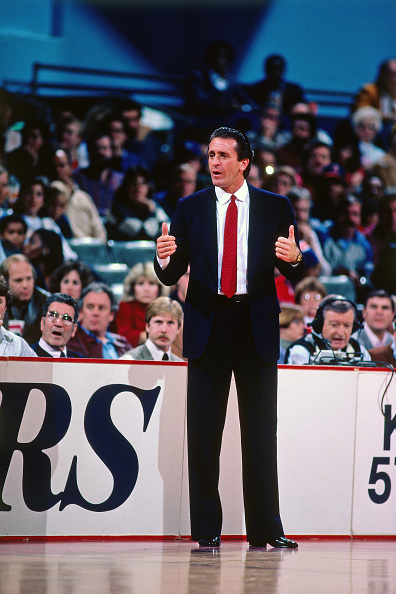
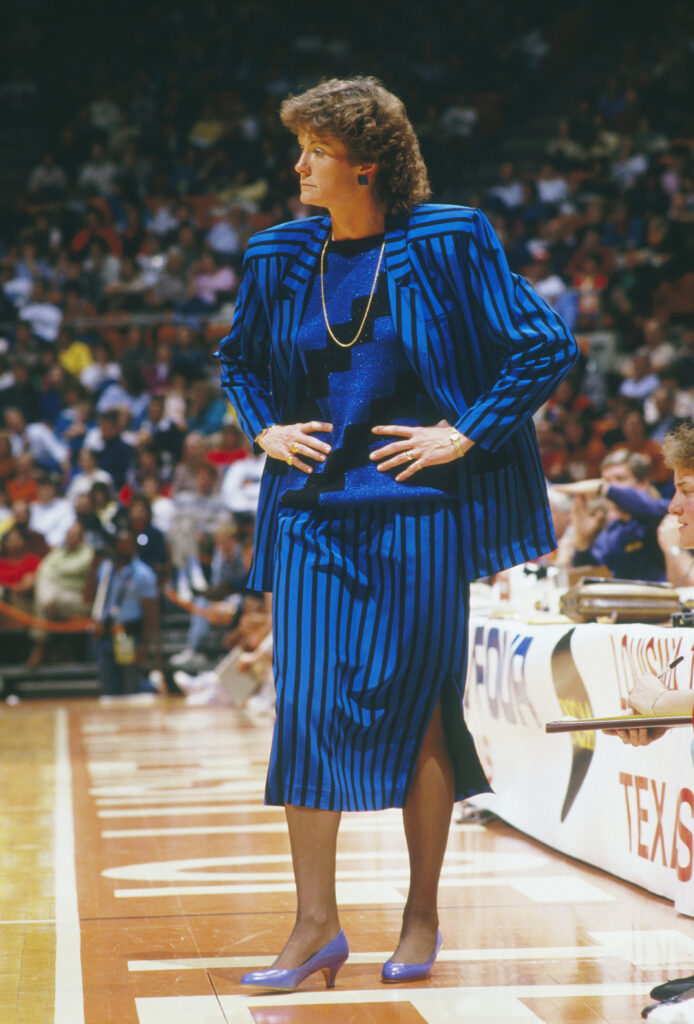
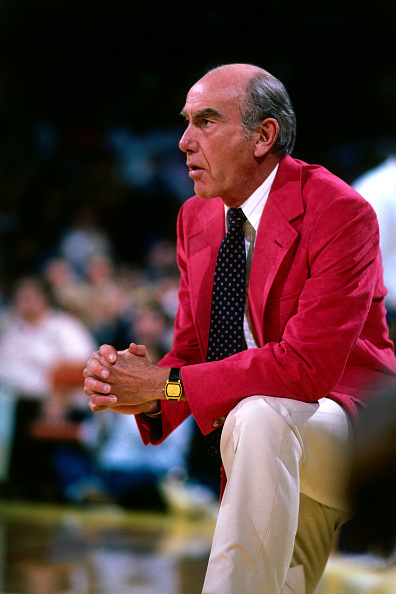
The Fab Five: The Team That Changed Basketball (1991 – ’00)
The 1991 recruiting class of Chris Webber, Jalen Rose, Juwan Howard, Jimmy King and Ray Jackson wasn’t just talented, they were iconic. On the court, they made history, becoming the first team in the NCAA to start five freshmen in a national championship game. Off the court, they had swagger.
Baggy shorts? That was the Fab Five. Black socks and black shoes? Michigan made it cool. They weren’t just a team — they were a movement. Though Michigan’s Fab Five never won a championship, their impact on basketball — and culture — was a bigger and longer-lasting prize.
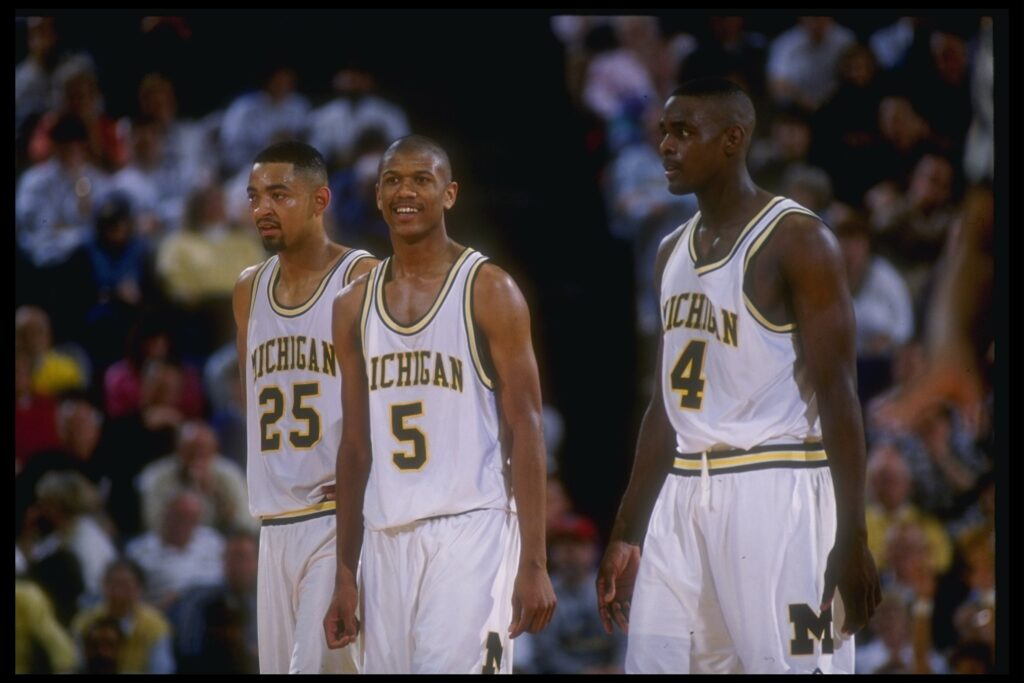
The Air Jordan Effect: How One Sneaker Changed the Game (1985 – Present)
The “Jordan Rules” meant two things in basketball: One was the physical, no-mercy defense the Detroit Pistons used to try and stop Michael Jordan in the late ’80s. The other? The unspoken rule that Jordan himself rewrote when he signed with Nike, forever changing the sneaker industry.
Let’s back up. In 1985, the NBA banned the black-and-red Air Jordan 1s, and Nike saw an opportunity. They paid fines (whether they existed or not is up for debate) and turned the controversy into a marketing masterstroke. That year, Nike sold between 3 million and 4 million pairs of AJ1s, an unheard-of number at the time.
Fast-forward nearly 40 sneaker models to today, when the Jordan Brand generates $7 billion a year. The sneaker game is the basketball game, and having a signature shoe is a sign of status. From legends like LeBron James, Stephen Curry and Kevin Durant to rising stars like Austin Reaves, players are still chasing the Air Jordan blueprint.
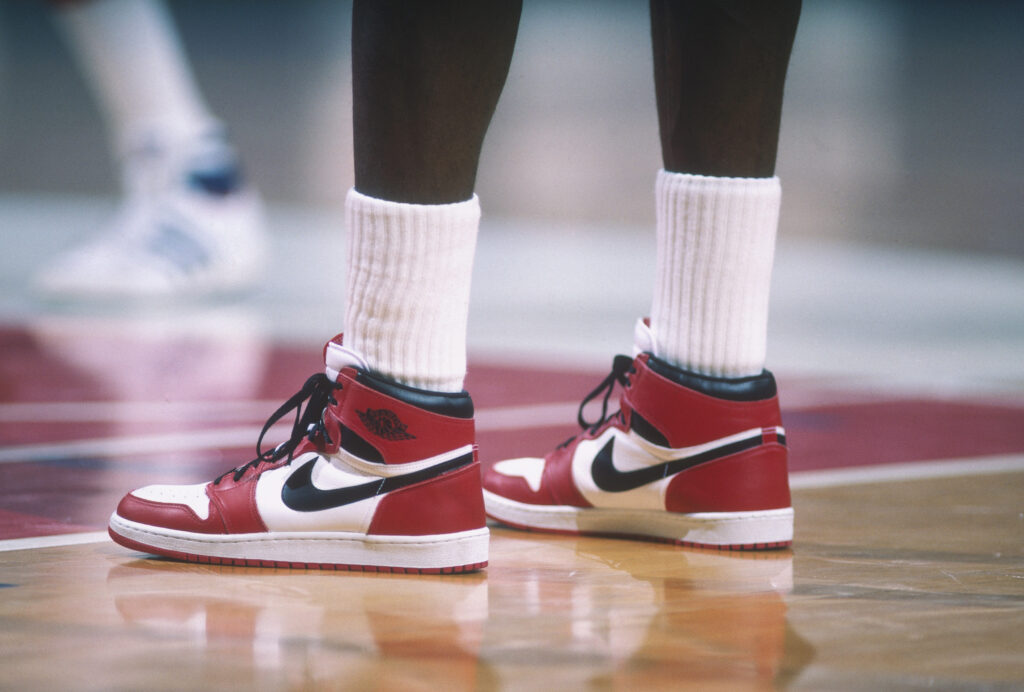
The Dream Team: When Basketball Went Global (1992)
No telling of Michael Jordan’s legacy off the court is complete without mentioning the Dream Team. During the 1992 Olympics, in Barcelona, the US men’s basketball squad didn’t just dominate, they showed up. They weren’t just the best players in the universe, they looked like the best players, and that’s how the world met basketball as culture.
Before the Dream Team, sports and fashion weren’t seen as one and the same. The names simply weren’t there. NBA players weren’t allowed to participate in the Olympics before 1992. Team USA’s loss to the Soviet Union in ’88 pushed the International Basketball Federation (FIBA) to allow professional players to participate in the games. Once that happened, the floodgates opened. The biggest names in basketball took center stage and the world’s biggest sportswear brands were right there with them.
The team’s Reebok tracksuits became instantly iconic, draped in stars and stripes with “USA” stamped boldly across the torso. At the medal ceremony, players — even Jordan — laced up Reebok Pumps, a moment that cemented the sneaker’s place in history.
Then there were the off-court fits: Jordan strolling through Barcelona in a matching two-piece short set with fresh Jordan XIs. Magic Johnson and Jordan cracking up in Team USA crewnecks, a look so timeless Kith later re-created it in 2024.
Fashion and sports may have been an odd tandem in 1992, but they blended effortlessly in Barcelona, setting the stage for everything that came next.
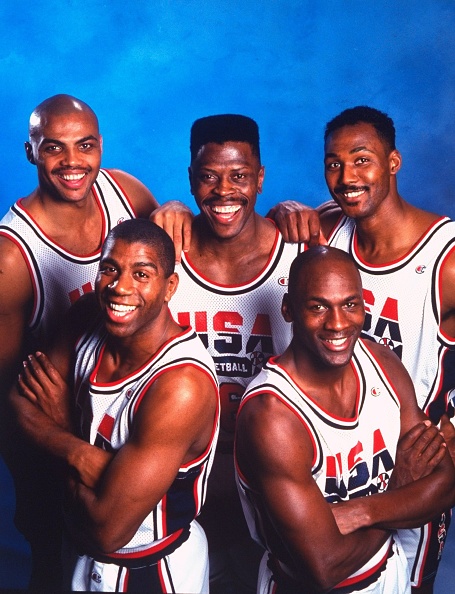
Rodman: The Odd Man In (1992 – ’98)
It might be safe to say that every menswear trend today was pioneered by Dennis Rodman. Dyed hair? Check. Painted nails? Check. Gender-nonconforming fashion choices? Big check. But some of his moves have yet to be overtaken. There’s no player in the NBA today, for example, willing to wear a bridal gown for the love of the game.
Rodman did it all. One day, he’d be in spaghetti straps and low-rise jeans. The next, he’d be in fishnets or a suit with a top hat. He was authentically himself, for better and sometimes for worse.
His peak in the 1990s coincided with a time when the NBA sought more conformity in its players. Rodman did his best to do the opposite, which created frequent clashes with league commissioner David Stern and the powers that be in the NBA.
But it didn’t matter to Rodman. He was all about the spectacle and changing public perception of basketball players.
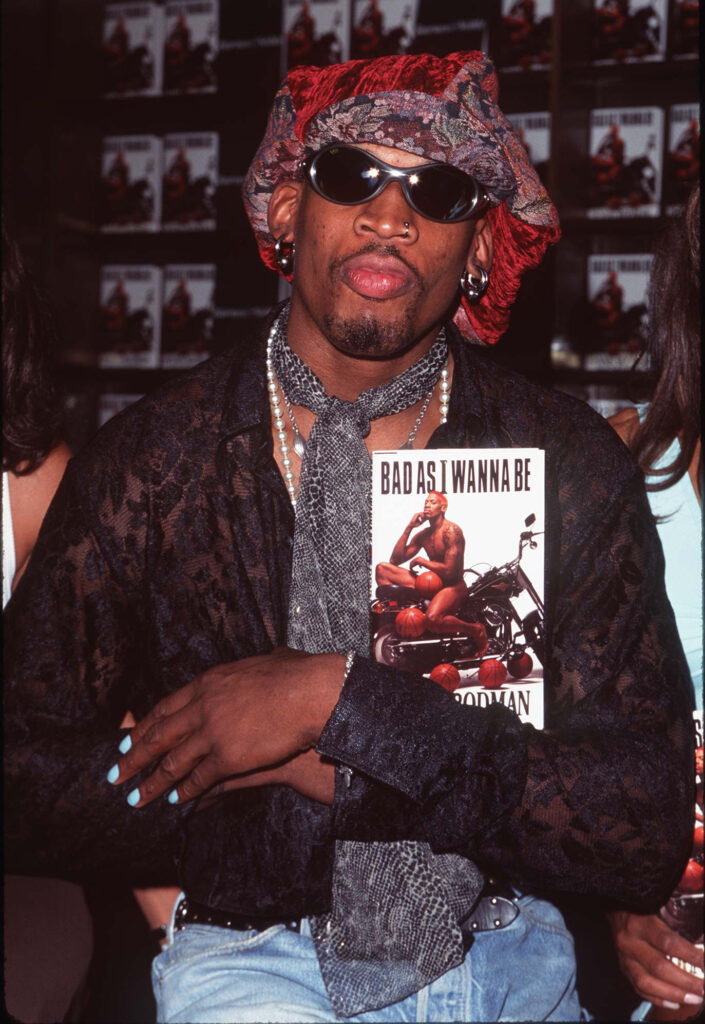
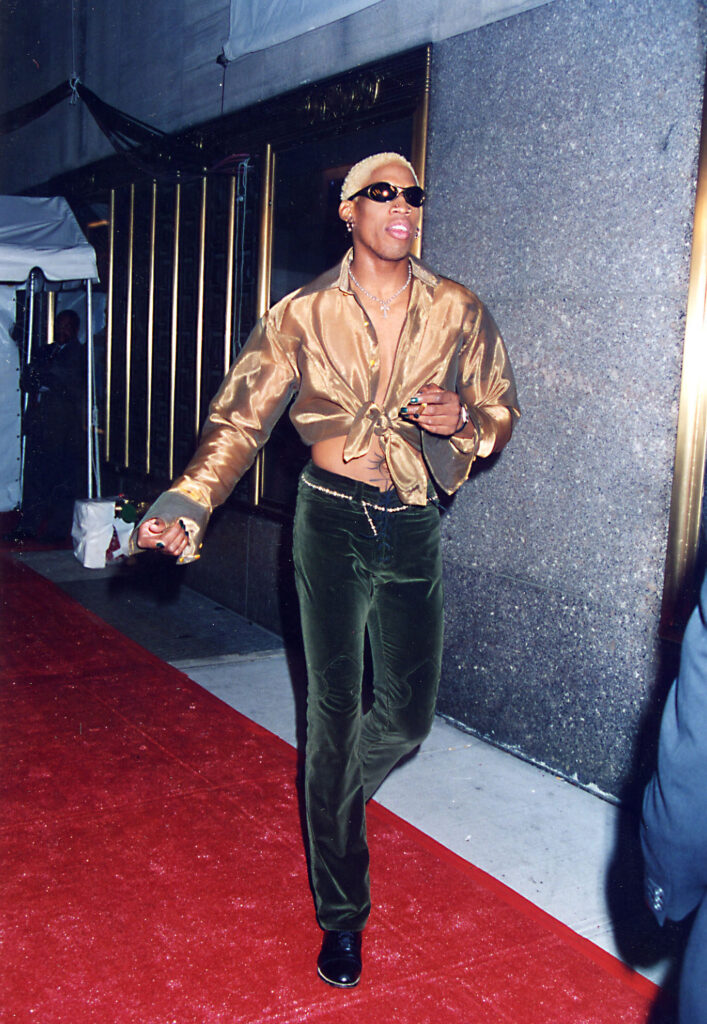
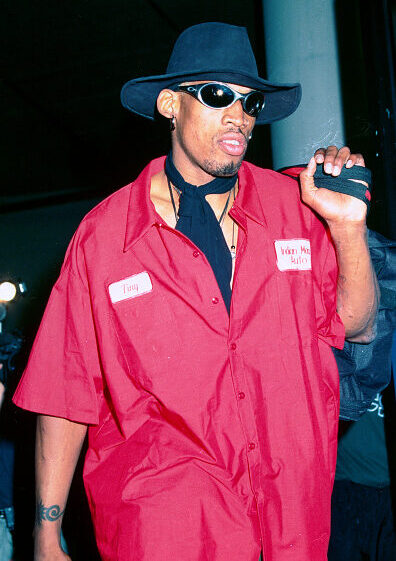
From The Streets To The Drafts (2003 – Present)
The NBA Draft isn’t just a forum for the next generation of ballers to find out where they’ll be embarking on their professional careers. The draft is an event. It’s pageantry.
Players walk across the stage to shake the commissioner’s hand wearing Gucci, Louis Vuitton, Balmain, D&G, and Versace. They have stylists and glam teams.
It wasn’t always that way, though. Most players had humble beginnings. The money wasn’t always there. Instead of brands, they opted for their Sunday best.
Think LeBron James the day he was drafted in 2003 in his baggy white suit. Or Kevin Durant in 2007 repping Texas, wearing his wide orange tie and pocket square.
Things began to shift in the 2010s. Hip-hop’s biggest fashion luminaries embraced more tapered styles in their formal wear. The popularity of Mad Men made Don Draper’s mid-1900s, slimmed-down suits stick. At the same time, players were willing to bend rules to make their looks pop. They embraced patterns and prints; loafers and slippers replaced simple hard-bottoms. Consider Andrew Wiggins at the 2014 draft in his rose-printed jacket, satin pants and velvet slippers.
Many of the best draftees are flush with cash, thanks to former pro parents or NIL (name, image, likeness) cash amassed in college. In 2023, Victor Wembanyama sported alien-green Louis Vuitton, part of his deal as an ambassador of the French luxury house, which in itself is a sign of how coveted modern basketball players are in the eyes of fashion’s biggest brands. In 2021, Jalen Green wore a dazzling Balmain suit. Clearly, the NBA Draft has become a runway.
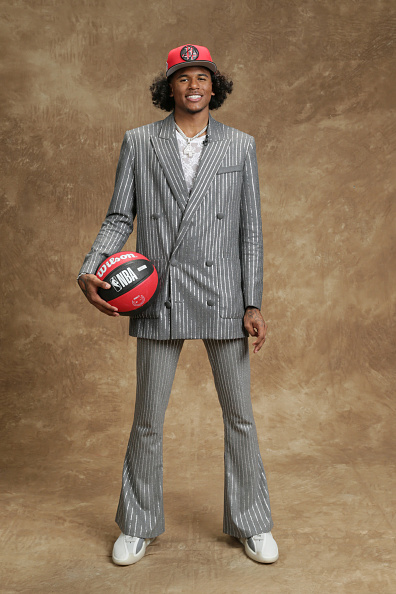
The WNBA Arrives (1997 – Present)
Before the Caitlin Clarks and Angel Reeses of the world were even a thought, the WNBA rested on the shoulders of stars like Lisa Leslie, Sheryl Swoopes and Rebecca Lobo in the late 1990s. The league’s start in 1997 followed the US women’s basketball team’s legendary gold medal run in the ’96 Olympics. The timing couldn’t have been better — its first game opened to 14,284 fans in the Forum.
The WNBA’s stars have always pushed boundaries and blended styles as much as they could. Back in the ’90s, that wasn’t much. The league had a dress code that required players to look like “athletic accountants” when they weren’t in uniform. Some players showed up in modest dresses and kitten heels. Others showed up in flowy, boxy suits matching the ’90s office aesthetic.
When it was time to dress down, you could catch your favorite WNBA stars sporting baggy tracksuits with the latest sneakers, much like Swoopes, Lobo, Dawn Staley and Teresa Edwards did on an episode of Martin in ’96.
Swoopes was the WNBA’s first draft pick. She was also the first WNBA player to have her own signature shoe, the Air Swoopes, which Nike released in ’95 — two years before the league’s launch.
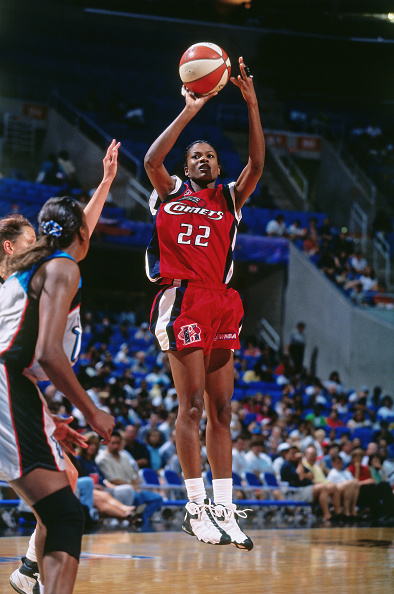
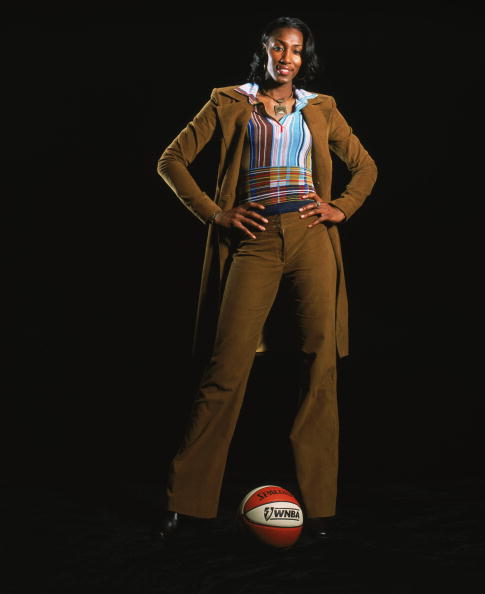
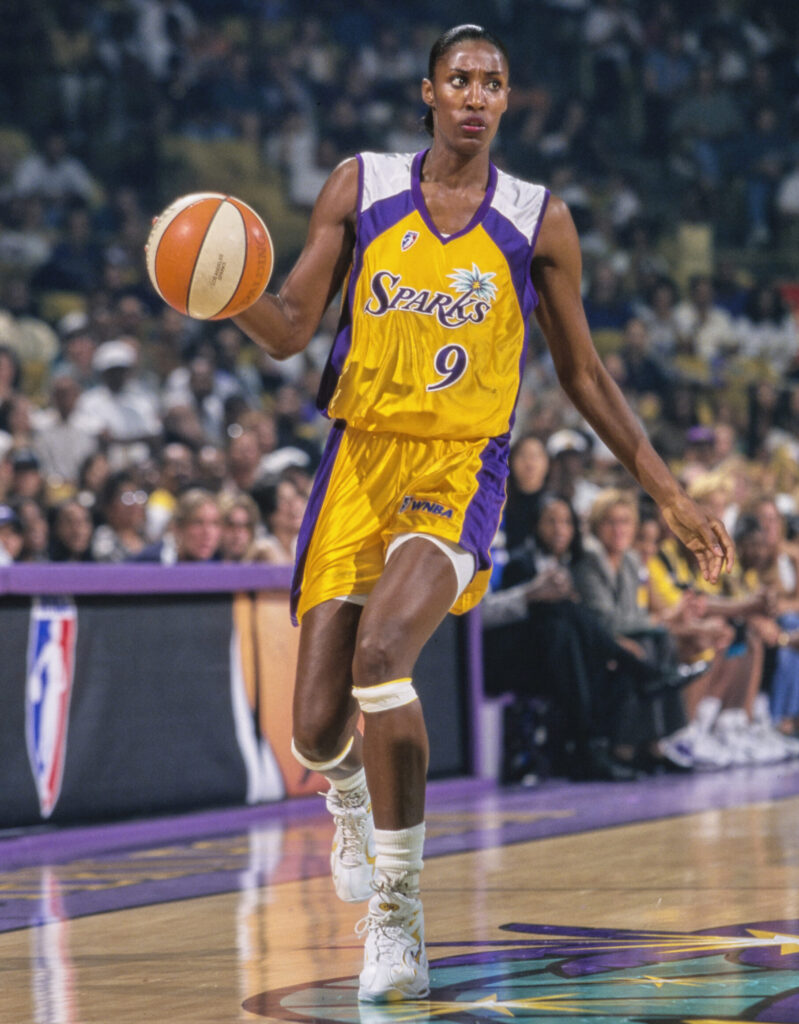
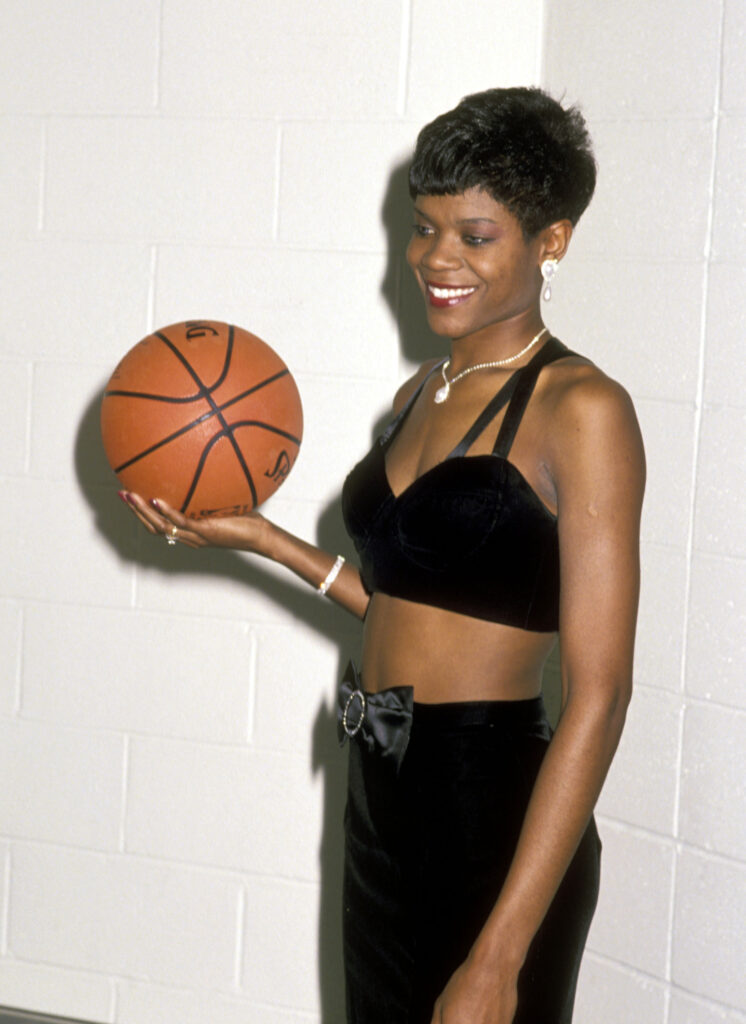
Allen Iverson: The Bridge Between Hip-Hop and Hoops (1996 – ’04)
From his days at Georgetown under John Thompson to his peak with the Philadelphia 76ers, Allen Iverson was the one every other player wanted to be like.
The smallest guy on the court, his game was pure inspiration. Eleven-time All-Star. MVP. All-NBA. The only thing missing was a championship. But his impact? Bigger than rings. On the court, he had the look. Nobody made cornrows cooler. Everyone remembers the moment when his mom braided his hair mid-game. Arm sleeves? Headbands? That’s Iverson’s legacy. Players wear them today because he made them a thing. He also helped keep Reebok in the sneaker race against Nike, with his Answer line still standing as one of the best in NBA history.
Off the court, he kept it real — baggy tees, oversized jerseys, tilted fitteds over a durag. It wasn’t just his style, it was hip-hop’s. The culture influenced him, and in turn, he influenced the entire league. Rappers rocked headbands in music videos because of Iverson. The connection between basketball and hip-hop was undeniable.
Then, in 2005, the NBA tried to distance itself. After the famous brawl, or the “Malice at the Palace,” the league enforced a strict dress code — an attempt to clean up its image, which meant pushing hip-hop culture to the margins. That also meant rejecting Iverson as the face of the league.
But influence isn’t something you can erase. Iverson’s style, swagger and attitude are still alive in today’s game. He didn’t just shape a generation — he became the blueprint.
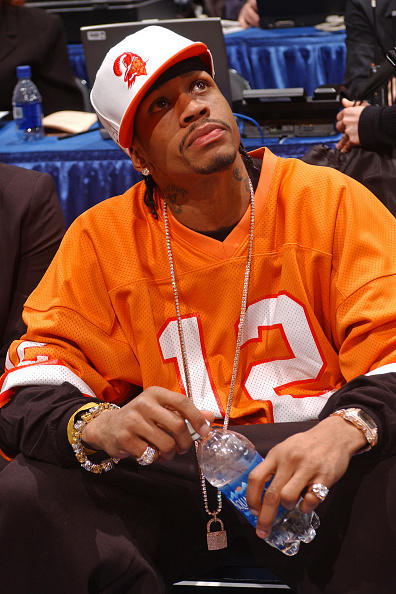
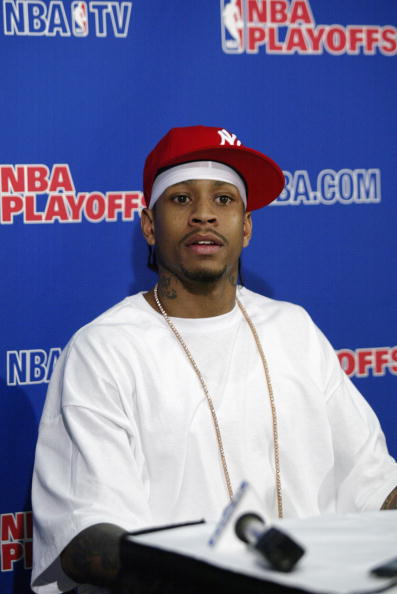
AND1 Ripple Effect (1998 – ’08)
In the midst of the NBA’s hip-hop era, a rival league came to fruition. The AND1 Mixtape Tour was a traveling league put on by AND1 — an apparel company that started as a T-shirt brand and was sold out of the back of the car of founders Jay Coen Gilbert, Seth Berger and Tom Austin — and B-Ball and Company. It was at AND1 that some of the best non-NBA talent got to shine and pull off never-before-seen moves. There was the dribbling from Grayson “The Professor” Boucher and Rafer “Skip to My Lou” Alston, and Taurian “Air Up There” Fontenette’s 720 dunk. To many fans, seeing the best talent on the tour was just as good as watching Kobe Bryant and Shaquille O’Neal in the NBA Finals.
But AND1’s brand success began waning in the late 2000s. Controversy around its so-called lenient rules divided audiences. In 2008, it was over. Players were abandoning the brand and the tours were done. By this point, AND1 had collaborated with the likes of Tai Chi sneakers, headlined by NBA star Vince Carter, Kevin Garnett, Latrell Sprewell and Chris Webber, helping to lay the foundation for the collaboration era to come.
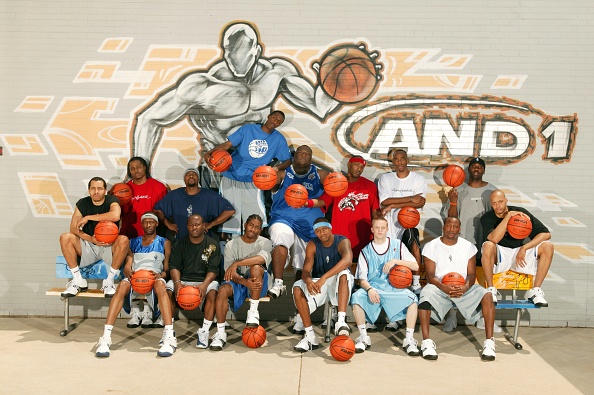
Tunnels as Personal Branding: Dwyane Wade’s Pivotal Tunnel Era (2016 – Present)
Up until this point, basketball and fashion moved in stride, but they hadn’t fully merged. Then came the rise of Instagram and players as brands. The tunnel — once just a hallway to the locker room — became the first snappable perspective of players, which meant fans helped turn it into a runway. In response, players used pre- and post-game fits as a statement.
While Carmelo Anthony, Jimmy Butler, and Chris Paul each brought their own flair, it was Dwyane Wade and Russell Westbrook who set the bar. They weren’t afraid to take risks; they mixed patterns, experimented with emerging brands and embraced the spotlight of the tunnel. That was before TikTok, which only amplified the movement. Today, entire profiles are dedicated to breaking down the latest tunnel looks. Stars like Jalen Green, Kyle Kuzma, Shai Gilgeous-Alexander and Jordan Clarkson treat game-day entrances like fashion week runways.
What was once just a walk to the court is now a branding opportunity. The game starts before tip-off — in the tunnel.
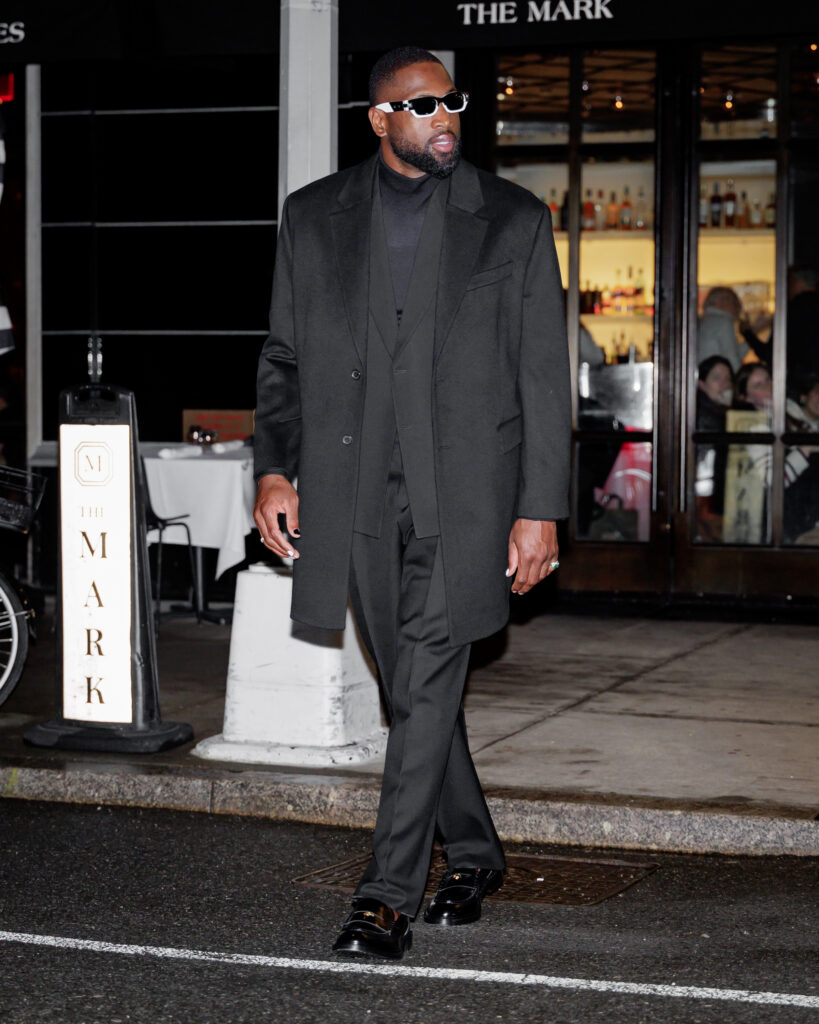
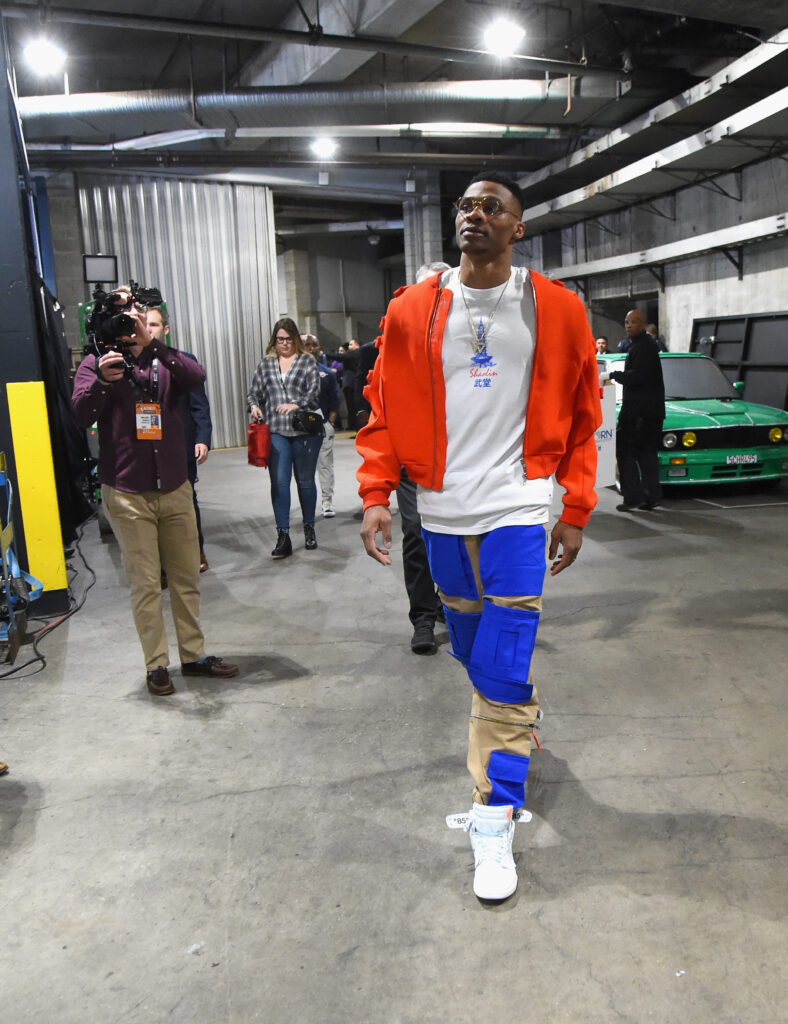
Women Rising: The Evolution of the Women’s Game (2016 – Present)
Women’s basketball has been played as long as men’s, but it wasn’t until very recently that the WNBA started to get anything like the attention it deserves. Now, people are finally paying attention.
Caitlin Clark, Angel Reese, and the loaded 2024 WNBA rookie class have been drawing headlines for the last couple of years. But the women’s game has always been stacked with generational talent. The late ’90s and early 2000s belonged to Sheryl Swoopes and the Houston Comets, who won four straight WNBA championships from the league’s inception in 1997 through 2000. Lisa Leslie and the Los Angeles Sparks carried the torch into the early 2000s, with Leslie becoming the first woman to dunk in a professional game.
As the league has grown, the dress code has relaxed and more cash has been infused into women’s basketball, overall. Players are now taking fashion to another level.
Skylar Diggins-Smith was nominated for best-dressed athlete by Sports Illustrated in 2020 because of what she called her “tomboy chic” look. Brittney Griner shifted beauty standards with her more masculine style when she burst onto the scene in the 2010s. And that versatility has always been what makes the league’s fashion pop.
Today, the WNBA is led by stars like A’ja Wilson, Breanna Stewart, Sabrina Ionescu and, yes, Clark. Of course, the movement extends beyond the court, too. In 2024, Clark and Reese made history when they showed up in Prada (Clark) and were styled by a high fashion editor (Reese). More signature shoes, bigger brand partnerships, and the explosion of NIL deals have turned college stars like Juju Watkins and Paige Bueckers into household names before they’ve even gone pro.
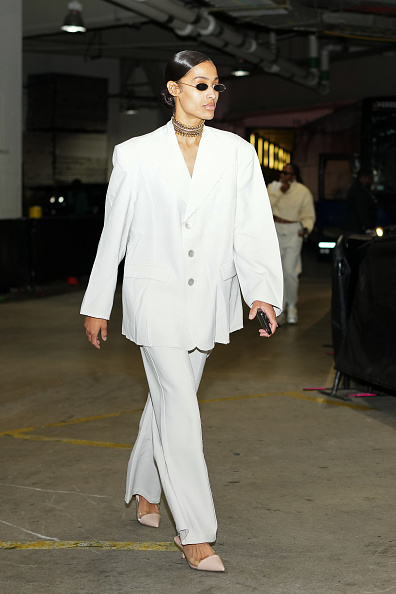
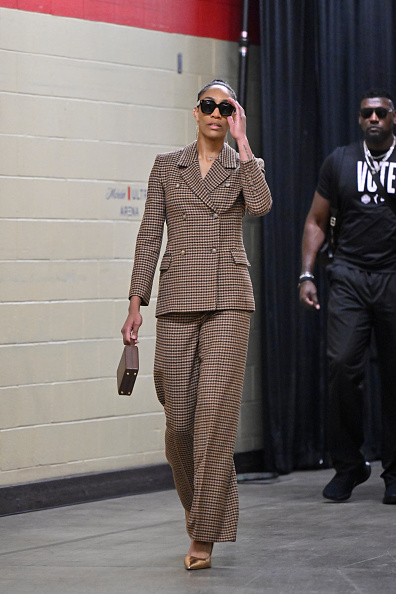
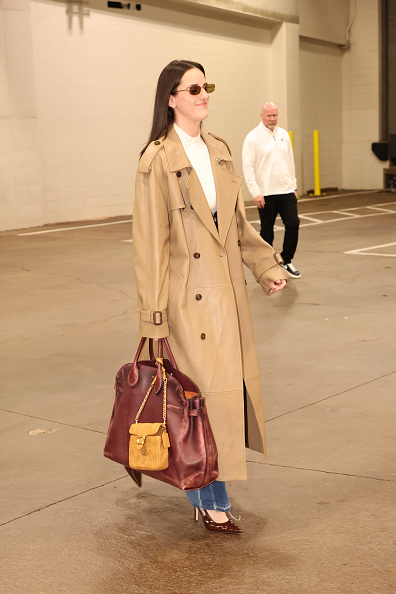
Photos:
Andrew D. Bernstein/NBAE via Getty Images
Focus on Sport /
Getty Images
Steph Chambers/
Getty Images
Andrew D. Bernstein/NBAE via Getty Images

